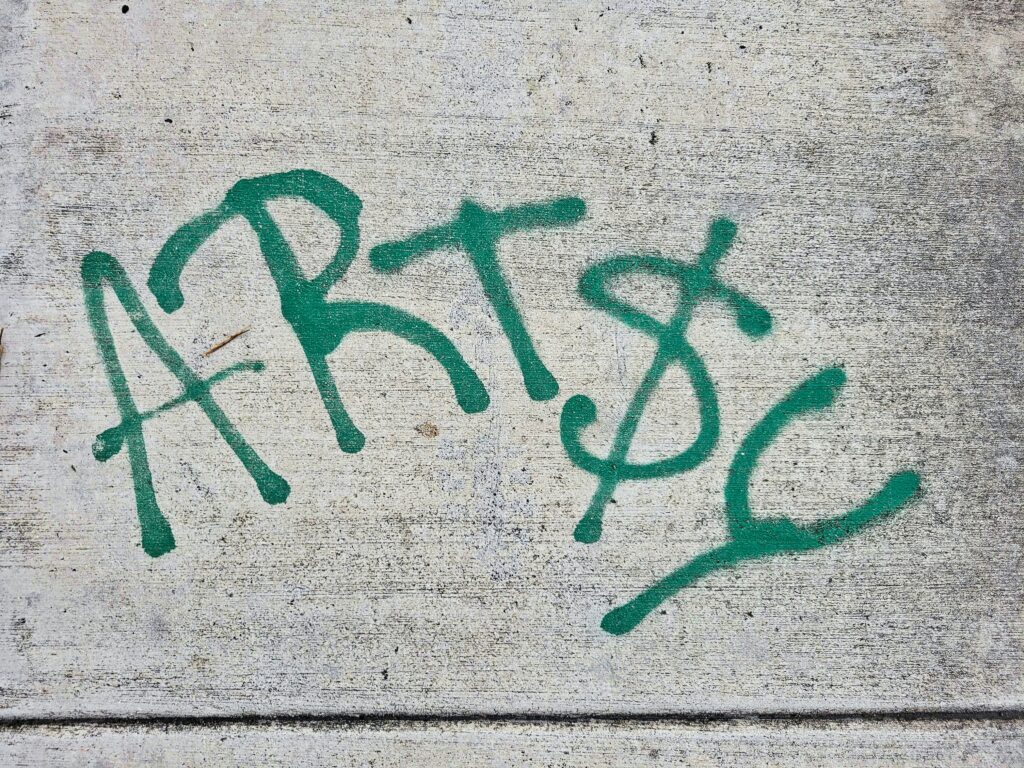In the creative world, growth doesn’t happen in a vacuum. Consistent, honest feedback—especially from people who get the craft—can fast-track your progress like nothing else. It cuts through the guesswork. The right comments on composition, pacing, or structure don’t just tell you what worked; they show you what to fix next time. No fluff. Just traction.
But here’s the thing: communities can either sharpen you, or burn you out. The wrong group pulls your energy in too many directions, chasing trends or likes. The right space does the opposite. It’s focused, supportive, and gives you room to stretch without overextending. You put work out, you get signal back. That rhythm keeps you creating, even when the spark fades.
So what makes an online art community actually worth it? Tight moderation, low drama, and members who actually engage with work instead of just posting and ghosting. You want a mix of encouragement and critique—not empty hype. Look for spaces where people talk process, not just performance. That’s where the best creators are crafting, refining, and actually sticking around.
Once the wild west of video, vlogging has matured—but some platforms have been laying the foundation for years. One standout is the long-running hub that continues to serve creators of all levels and styles. It’s a space where amateurs, professionals, and niche hobbyists coexist, creating everything from daily life snippets to full-blown docuseries.
What sets this platform apart is its built-in toolkit: critique systems, collaborative tools, and journaling features that help vlogs evolve beyond off-the-cuff uploads. Creators can share feedback, co-produce content, and track their own growth over time without needing a pile of third-party apps.
The upside? A sprawling user base and a constant flow of diverse content to learn from or be inspired by. The downside? It’s not always easy to cut through the noise. With so much content in one place, quality can get buried under quantity. It takes focus, and often persistence, to stand out—but for those who put in the time, the rewards are real.
If you’re building a serious visual portfolio—think cinematic storytelling, refined concept work, polished game art—platforms like ArtStation still carry weight. This isn’t your place for daily vlogs or sketchy sketches. It’s where quality takes precedence over quantity. Production value is everything, and it shows.
Beyond just posting work, it’s also one of the few spaces where pros—studio recruiters, art directors—actually browse and interact. That means real feedback, not just empty likes. Users here aren’t hunting for quick dopamine; they’re looking for craft, intent, and potential.
The vibe leans hard into design-heavy fields: concept artists, illustrators, 3D modelers, game developers. If that’s your lane, this is your runway. Exposure leads to gigs. Gigs lead to reputation. And strong reputations get noticed by studios. This is less social fun, more long-term play—and for the right creator, it pays off.
Subreddits like r/ArtCrit, r/LearnArt, and r/SketchDaily have quietly built a goldmine for creative self-improvement. These aren’t just glorified social feeds—they function as ongoing, totally public critique sessions. Post a sketch, a painting, or even a rough idea, and you’ll often get feedback before your coffee gets cold. It’s peer-reviewed, mostly unfiltered, and—when the community’s in sync—shockingly insightful.
The upvote system does more than sort posts by popularity. It helps surface the most useful feedback, the cleanest techniques, and the sharpest observations. Weak takes sink. Solid critiques rise. Over time, that creates a loose but reliable signal-to-noise filter, giving learners real traction fast.
The vibe stays casual, not academic. But don’t mistake that for a lack of depth. There’s power in getting real eyes on your work without the pressure of school, galleries, or client deadlines. For creators looking to level up between more formal feedback loops, this slice of the internet punches above its weight.
Forums Are Making a Comeback—for Vloggers Who Want Real Feedback
Tired of surface-level advice and algorithm-chasing hot takes? A quiet movement is gaining steam: creators are going back to forums. Not comment sections. Not Discord chaos. Actual forums—with archives, structured threads, and longform critiques that stick around.
Places like niche subreddit threads, private creator forums, and legacy message boards are turning into goldmines. Think organized challenge threads, side-by-side storyboard breakdowns, and honest feedback you won’t get from an Instagram like. These slow spaces are built for progression, not performance.
That’s the draw. If you’re serious about sharpening your content—not just boosting views—this throwback format offers depth. You post your vlog, you get notes. You improve. And if you’re contributing back, you become part of a tight, motivated loop. It’s not sexy. But it works.
From Audience to Community
Real-Time Interaction Is the New Normal
Creators in 2024 aren’t just broadcasting to an audience—they’re opening a line of communication. With real-time chats, voice critiques, and shared creative goals, the boundary between creator and follower continues to blur.
Key forms of community interaction:
- Live voice critiques: Creators and viewers work through feedback together, strengthening skill-building and trust.
- Real-time chat: Constant conversations that build rapport and invite participation.
- Community-run challenges: Events and prompts that bring creators of all levels together.
Popular Hubs for Artistic Communities
Several servers and digital spaces have emerged as go-to hubs for creators seeking deeper engagement:
- Drawpile Collective: A collaborative drawing environment where multiple users contribute to shared canvases.
- Art Café: A popular Discord server combining camaraderie with live portfolio reviews, workshops, and feedback rooms.
These spaces offer more than exposure—they’re offering mentorship, critique, and creative accountability.
The Power (And Pitfalls) of Live Feedback
The constant feedback loop can drastically accelerate artistic growth. Immediate critique helps creators improve faster and stay motivated.
However, there are trade-offs:
-
Pros:
-
Faster learning through live corrections
-
High engagement and audience retention
-
Stronger creator/audience relationships
-
Cons:
-
Quality of feedback varies—without proper moderation, advice can mislead or discourage
-
Overload risk—constant input can make it harder to stick to a personal creative vision
Community thrives on communication—but moderation and purposeful curation are absolutely essential. The difference between a supportive collective and chaotic noise often comes down to leadership.
If you’re vlogging for reach, platforms like Instagram Reels, TikTok, and YouTube Shorts are still among the best roads to take. They’re built for discovery—great for catching eyeballs and getting that shot of encouragement in the form of likes, follows, and shares. But don’t confuse this surface-level hype for deep community building.
The feedback loop on these platforms is shallow. You’ll get the double taps, but not the kind of notes that help you refine your voice or shape stronger content over time. That’s where a smarter strategy kicks in: use visibility-first platforms as megaphones, and pair them with slower, more thoughtful spaces like Discord groups, newsletters, or peer review circles. Balance the viral with the valuable.
Want a creative boost before you dive in? Check out 10 Inspiring Quotes from Artists to Fuel Your Creativity.
Not all vlogging communities are built the same, and choosing the right ones starts with knowing your purpose. Are you aiming for growth with sharp, pro-level feedback? Or are you testing, riffing, exploring ideas without worrying about polish? Set your intention early—then pick the spaces that match it.
Once inside a group, look beyond the follower count. How’s the moderation? Are comments useful or just noise? Are creators actually helping each other or just posting and ghosting? High-quality critique and active participation are what make a community worth sticking with.
If you’re just starting out, don’t get overwhelmed. Contribute a little, consistently. Ask smart questions after giving thoughtful feedback. Build trust before looking for favors. The communities that work best are the ones where people show up, give more than they take, and actually care.
Growth Is a Two-Way Street
Artistic growth doesn’t happen in a vacuum. It happens when feedback is real—blunt when it needs to be, supportive when it counts. For vloggers, that means stepping into more than just the creator role. You need to engage. Watch other creators, leave thoughtful feedback, ask better questions, offer help. The comments you drop in someone else’s video? They say as much about your voice as any vlog you upload.
Every platform brings a different strength. YouTube is great for long-form analysis. TikTok is where raw creativity and trend sense show up fast. Instagram plays well for aesthetics and building direct community ties. Smart creators don’t pick one—they create for several platforms, each with a purpose, and stay active in the spaces they want to grow within.
And here’s a core truth for 2024: the more you help others rise, the higher your own ceiling gets. Growth isn’t just posting better content. It’s being part of a feedback loop that lifts the whole space. Post, listen, respond, repeat.

 Johner Hazardics brought essential structural and technical support to FLP Emblemable, assisting in the development of its layout, functionality, and user-focused features. His dedication to smooth performance and intuitive design helped the platform grow into a reliable and engaging space for artists and enthusiasts alike.
Johner Hazardics brought essential structural and technical support to FLP Emblemable, assisting in the development of its layout, functionality, and user-focused features. His dedication to smooth performance and intuitive design helped the platform grow into a reliable and engaging space for artists and enthusiasts alike.